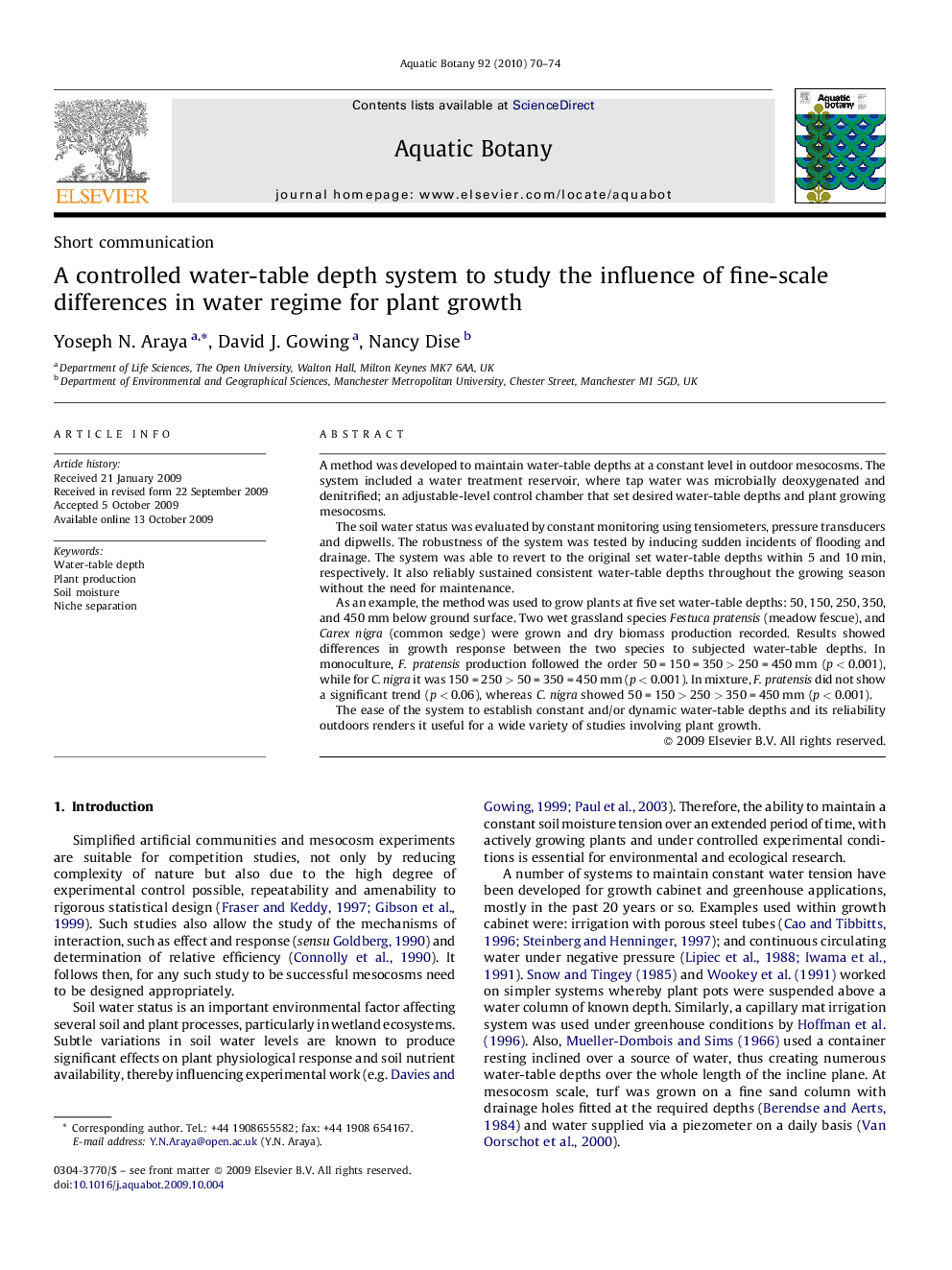| Article ID | Journal | Published Year | Pages | File Type |
|---|---|---|---|---|
| 4528362 | Aquatic Botany | 2010 | 5 Pages |
A method was developed to maintain water-table depths at a constant level in outdoor mesocosms. The system included a water treatment reservoir, where tap water was microbially deoxygenated and denitrified; an adjustable-level control chamber that set desired water-table depths and plant growing mesocosms.The soil water status was evaluated by constant monitoring using tensiometers, pressure transducers and dipwells. The robustness of the system was tested by inducing sudden incidents of flooding and drainage. The system was able to revert to the original set water-table depths within 5 and 10 min, respectively. It also reliably sustained consistent water-table depths throughout the growing season without the need for maintenance.As an example, the method was used to grow plants at five set water-table depths: 50, 150, 250, 350, and 450 mm below ground surface. Two wet grassland species Festuca pratensis (meadow fescue), and Carex nigra (common sedge) were grown and dry biomass production recorded. Results showed differences in growth response between the two species to subjected water-table depths. In monoculture, F. pratensis production followed the order 50 = 150 = 350 > 250 = 450 mm (p < 0.001), while for C. nigra it was 150 = 250 > 50 = 350 = 450 mm (p < 0.001). In mixture, F. pratensis did not show a significant trend (p < 0.06), whereas C. nigra showed 50 = 150 > 250 > 350 = 450 mm (p < 0.001).The ease of the system to establish constant and/or dynamic water-table depths and its reliability outdoors renders it useful for a wide variety of studies involving plant growth.
